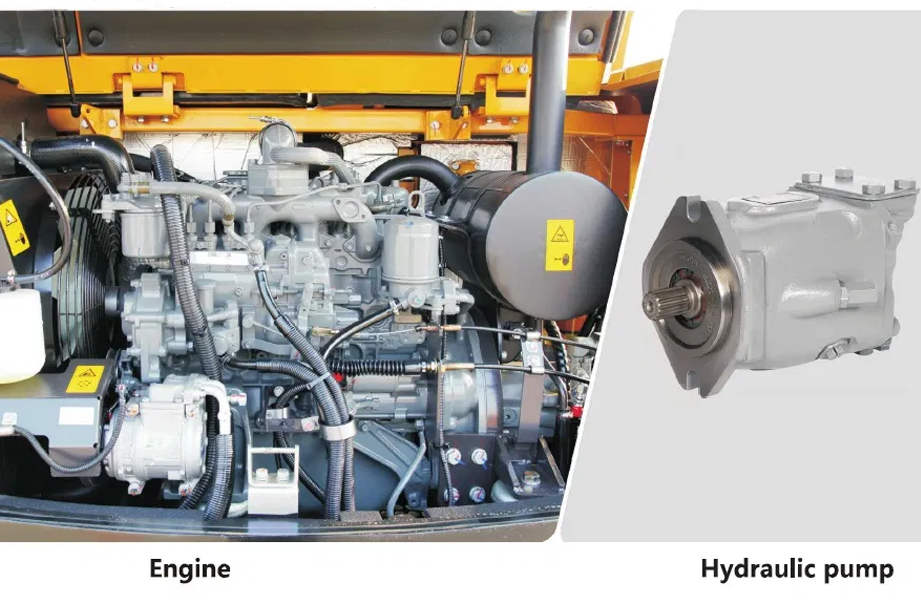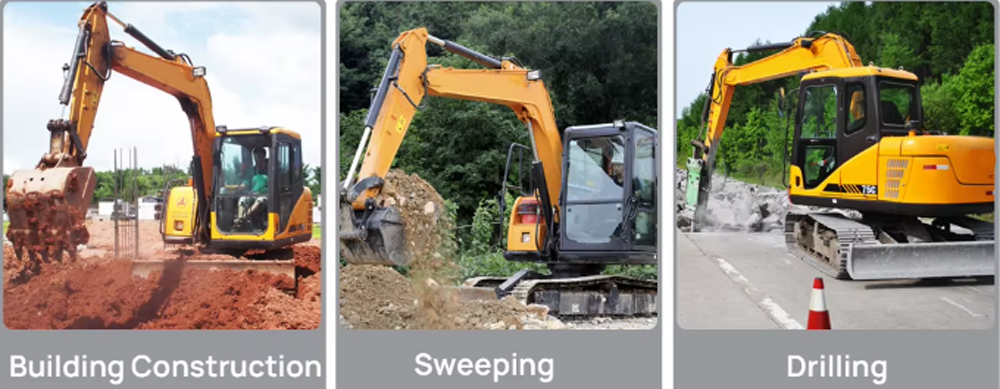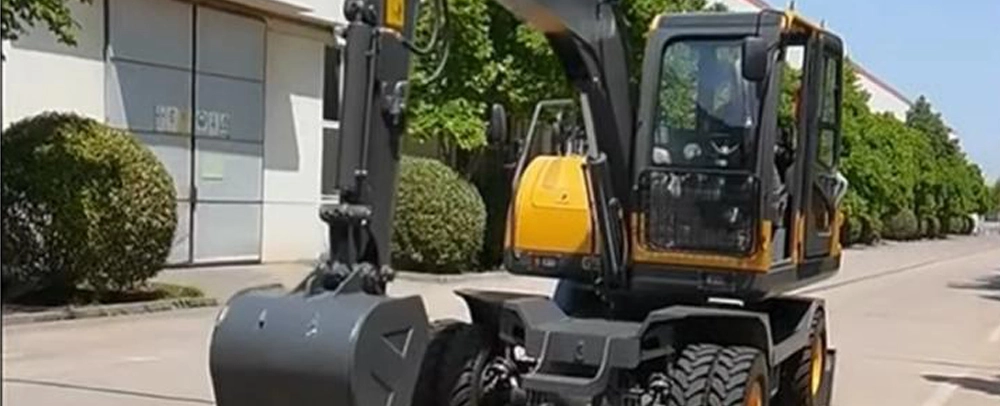Small Excavators are essential construction equipment. They feature a compact design, making them suitable for operating in restricted areas like urban construction sites and small landscaping projects. With a durable steel frame and a reliable hydraulic system, they offer precise control over the digging arm and bucket. The adjustable boom and bucket enable efficient excavation and material handling. Equipped with a powerful engine, they deliver good performance while maintaining fuel efficiency. The operator cabin is designed for comfort, providing clear visibility and user-friendly controls, enhancing overall productivity and operator experience.
| Pictures |
|
|
|
|
|
|
|
| General parameters | |||||||
| Model | SY55C | SY60C | SY70C | SY75C Pro | SY75C | SY85C | SY125C |
| Tonnage range | Small excavators (4-13 tons) | Small excavators (4-13 tons) | Small excavators (4-13 tons) | Small excavators (4-13 tons) | Small excavators (4-13 tons) | Small excavators (4-13 tons) | Small excavators (4-13 tons) |
| Travel mode | Crawler | Crawler | Crawler | Crawler | Crawler | Crawler | Crawler |
| Bucket type | Backhoe | Backhoe | Backhoe | Backhoe | Backhoe | Backhoe | Backhoe |
| Application | General purpose | General purpose | General purpose | General purpose | General purpose | General purpose | General purpose |
| Power Type | Fuel | Fuel | Fuel | Fuel | Fuel | Fuel | Fuel |
| Engine (fuel) | |||||||
| Type | In-line, water-cooled, four-stroke Mechanical pump, naturally aspirated | In-line, water-cooled, four-stroke Mechanical pump, naturally aspirated | 4-cylinder, 4-stroke, direct injection, overhead camshaft, water-cooled, with supercharger | 4-cylinder, 4-stroke, direct injection, overhead camshaft, water-cooled, with supercharger | 4-cylinder, 4-stroke, direct injection, overhead camshaft, water-cooled, with supercharger | four-stroke, water-cooled, double overhead camshaft, electronically controlled common rail injection system, supercharged, intercooled | |
| Rated power (kW) | 36 | 36 | 36 | 43 | 55 | 55 | 89 |
| Rated speed (r/min) | 2100 | 2000 | 2100 | 2200 | 2000 | 2000 | 2200 |
| Maximum torque (N-m) | 195 | 206.9 | 195 | 210 | 280 | 280 | 500 |
| Total Displacement (L) | 3 | 2.615 | 2.999 | 2.179 | 2.999 | 2.999 | 4.5 |
| Emission standards | Euro 4 | Euro 4 | Euro 4 | Euro 4 | Euro 4 | Euro 4 | |
| Performance Parameters | |||||||
| Operating weight (kg) | 5780 | 6000 | 7050 | 7280 | 7350 | 8500 | 12450 |
| Bucket capacity (m³) | 0.23 | 0.25 | 0.3 | 0.12~0.32(0.28) | 0.3 | 0.54 | |
| Travel speed (high/low) (km/h) | 4.0/2.5 | 4.1/2.4 | 4.4/2.4 | 4.4/2.4 | 4.4/2.4 | 4.4/2.4 | 5.5/3.5 |
| Rotation speed (rpm) | 10.3 | 10.3 | 11 | 11.5 | 11.5 | 11.5 | 12 |
| Ground Specific Pressure (Kpa) | 33 | 31 | 33 | 33 | 33 | 41.6 | |
| Climbing capacity (%) | 70 | 70 | 70 | 70 | 70 | 70 | |
| Bucket digging force (kN) | 45 | 45 | 56 | 56 | 56 | 100 | |
| Dimension | |||||||
| L x W x H (transportation condition) (mm) | 5915×2025×2560 | 5915×2025×2560 | 6120×2220×2720 | 6120×2220×2675 | 6350*2220*2675 | 7360×2490×2890 | |
| Track Ground Length (mm) | 2050 | 2190 | 2195 | 2195 | 2680 | ||
| Overall track length (mm) | 2550 | 2710 | 2820 | 2820 | 2685 | 3360 | |
| Track plate width (mm) | 400 | 400 | 450 | 450 | 500 | ||
| Overall track width (mm) | |||||||
| Track gauge (mm) | 1600 | 1600 | 1750 | 1750 | 1750 | 1990 | |
| Minimum Ground Clearance (mm) | 315 | 315 | 380 | 380 | 430 | ||
| Minimum Turning Radius (Front End Unit) (mm) | 2540 | 2540 | 1720 | 1720 | 2880 | ||
| Rear Swing Radius (mm) | 1635 | 1635 | 1800 | 1800 | 1900 | 2210 | |
| Scope of operation | |||||||
| Maximum digging radius (mm) | 6070 | 6070 | 6240 | 6240 | 6240 | 7765 | |
| Maximum digging depth (mm) | 3830 | 3830 | 4020 | 4065 | 4095 | 5210 | |
| Maximum digging height (mm) | 5610 | 5610 | 7060 | 7015 | 6985 | 7760 | |
| Maximum unloading height (mm) | 3910 | 3910 | 5155 | 5110 | 5080 | 5520 | |
| Maximum vertical digging depth (mm) | 3055 | 3055 | 3290 | 3335 | 3305 | 4720 | |
| Bulldozer width x height (mm) | 340 | 340 | 405 | ||||
| Bulldozer lift or push depth (mm) | 401/370 | 401/370 | 350/360 | 480/417 | |||
| Fuel Volume | |||||||
| Fuel tank (L) | 125 | 125 | 150 | 150 | 150 | 150 | 280 |
| Hydraulic oil tank (L) | 85 | 85 | 120 | 120 | 120 | 150 | |
| Engine Oil Change (L) | 9.2 | 9.6 | 9.5 | 9.5 | 9.5 | 13 |

1. The chassis of a small excavator is the main structural frame, usually made of high-strength steel. It provides a stable base for the entire machine. The undercarriage consists of tracks or wheels.
2. The boom is a large, pivoting component that connects the excavator's body to the arm. It's typically a telescopic or fixed-length structure made of thick steel. The boom provides the vertical reach and can be adjusted in angle to position the bucket.
3. The bucket is the working tool at the end of the arm. It comes in various shapes and sizes depending on the application. A general-purpose bucket has a flat bottom and curved sides for scooping loose materials such as soil, sand, or gravel.
4. The hydraulic system is the power behind the excavator's movements. It consists of a hydraulic pump, usually driven by the engine. The pump pressurizes the hydraulic fluid and distributes it through a network of hoses and valves to the hydraulic cylinders.
5. The cab provides a comfortable and protected space for the operator. It's designed with an ergonomic seat to reduce fatigue during long work hours. The controls are usually joystick-based, with one joystick for the boom and arm movements and another for the bucket and rotation.
6. The engine is the heart of the small excavator, supplying power to the hydraulic pump and other systems. Small excavators typically have diesel engines, known for their high torque output.

1. Digging Depth and Reach: Determine the maximum digging depth and reach you need for your projects. If you're mainly doing trenching work, you'll require a certain depth capacity.
2. Material Handling: Consider the type of materials you'll be handling. If it's mostly loose soil, a standard bucket might suffice.
3. Operating Space: Think about the work environment. Small excavators are known for their compactness, but you still need to ensure the machine can maneuver in your specific space.
4. Operating Weight: The weight of the excavator affects its stability and transportability. Heavier machines generally offer more stability during digging but may require more robust transportation.
5. Bucket Capacity: The size of the bucket determines the amount of material you can move in one cycle.
6. Engine Power: A more powerful engine provides greater digging force and faster cycle times. However, it also consumes more fuel.
7. Performance: A good hydraulic system is essential for smooth and precise operation. Look at the flow rate of the hydraulic pump and the system pressure.
8. Compatibility: Ensure the excavator can be easily equipped with the attachments you need. Common attachments include augers, grapples, and compactors.

Small excavators have a compact structure that enables them to work in restricted spaces. Their small size allows for easy access to narrow job sites such as urban alleys, small gardens, and indoor construction areas.
The combination of the boom, arm, and bucket offers a wide range of digging functions. The boom can be adjusted in height and angle, and the arm provides horizontal reach. Different types of buckets are available for specific tasks.
A well-designed hydraulic system is a key feature. It powers the movement of the boom, arm, and bucket, allowing for precise and efficient operation.
The operator cab is designed with comfort in mind. It has an ergonomic seat that reduces fatigue during long-working hours. The controls are conveniently located and intuitive to use, typically with joysticks for different functions.
Small excavators are built to withstand the rigors of construction work. The body and frame are made of high-strength steel to ensure stability and durability.
These excavators are often compatible with a variety of attachments. In addition to different types of buckets, they can be equipped with attachments such as hydraulic breakers for demolition work, augers for drilling holes, and grapples for handling bulky or irregular materials.

